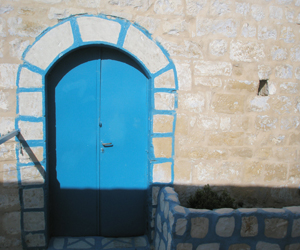The Golden Age Of Safed
Situated on a mountain top and overlooking the Sea of Galilee, Safed is considered one of the four Israeli cities holy to Judaism along with Jerusalem, Tiberias, and Hebron. Safed is a mixture of the old and the new, with its Crusader citadel, old stone houses, and modern shops. The city is considered to be one of the quaintest and most picturesque of all Israeli cities, in league with Jerusalem and Jaffa.
Jewish Mysticism
While Jerusalem is considered the epicenter of Jewish learning, Safed is considered the very center for the study of Jewish mysticism. It is in Safed that the study of Kabbala, the body of literature comprising the inner secrets of Jewish scripture, found its full expression.
As early as the 16th century, Jewish sages settled in the area as a response to the times, one of relative freedom for Jewish study and religious practice. This was the era of the Ottoman Empire. Safed became at this time an important destination for Jews from both near and far, who hoped to commune with local sages and rabbis and receive advice. Through the centuries, Safed has held to its reputation as the stronghold of Jewish mysticism and pilgrimage.
Religious Freedom
Because of its high topographical location, Safed had long served as the battleground for militant Crusaders and Moslems. The 16th century at last brought the Jews of Safed peace from warring nations as well as freedom of religion. During the long history of foreign domination, the Jews of Safed were forced to practice their religion in secret. When the Turks came into power, the Jews at last found the liberty to practice their religion in the full light of day, free from subterfuge or restraint. This era of Ottoman rule over Palestine is therefore considered the golden age of Safed.
It was during this era that the Jewish refugees from the Spanish Inquisition were welcomed and encouraged to settle within Safed's city walls. The city's cultural life blossomed and Safed's population burgeoned with religious scholars and Hebrew poets, casting a bohemian light on its inhabitants. Perhaps the most famous hymn composed during this time is the Lekha Dodi (To You My Beloved) prayer, recited in the synagogue on the Sabbath Eve as a welcome to the mystical Sabbath Queen, who is believed to usher in the holy character of the day. The Lekha Dodi prayer was composed by Rabbi Shlomo Halevi Alkabetz.
The school of thought that represents Jewish mysticism, Kabbalah, was a popular discipline during this time, as was the furthering of the framework of Jewish religious law. It was during this golden era that Rabbi Joseph Caro compiled his Code of Jewish law, which can still be found in a majority of Jewish homes.

